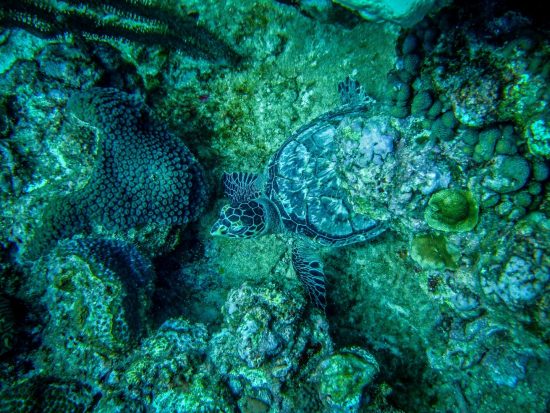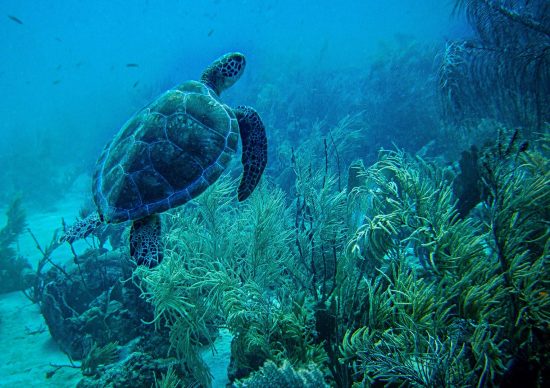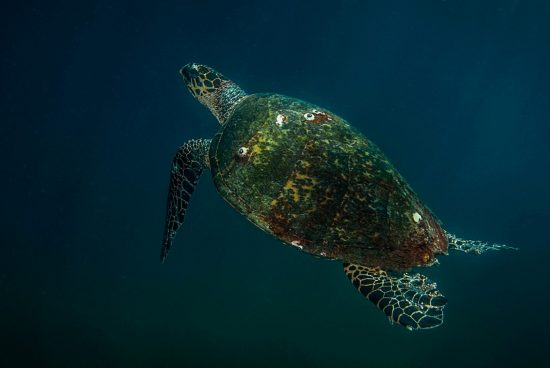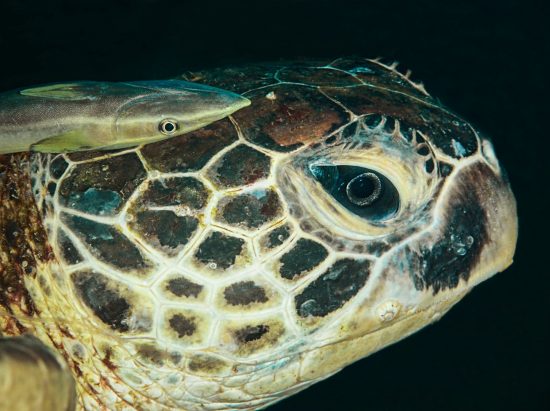







Out of the seven species of sea turtles, six have made it onto the International Union for Conservation of Nature's (IUCN) red list, with two species classified as critically endangered. While some efforts have been made to assist populations in recovery, it is a constant worry that the sea turtles we see while diving might disappear forever. There are several types of conservation and monitoring programs set up all over the world with a lot of publicity, but why should we care?
Sea turtles have been around for over 100 million years. They were around when dinosaurs roamed the planet. They regulate the ecosystem on coral reefs and are a critical trophic level and a keystone species. They have seen and survived all sorts of natural disasters, and they are still here. Seeing a turtle for the first time in Tenerife while diving with my husband and family changed my life forever. I found the curiosity and serenity coming from their eyes so soul piercing and calling. This encounter years ago made me think and look into the life of sea turtles closer. While researching these almost mythical creatures, I discovered that we humans, both directly and indirectly, have caused the number of turtles to diminish over the years.
The human impact such as overfishing, accidental bycatch in nets and marine vessel strikes are a further danger to them at sea. In the last century, they also have a new enemy in the form of plastic. Large plastic pieces can be mistaken for food and plastic bags that look just like jellyfish are often mistaken by leatherbacks as their favourite meal. Microplastics which have only come to light as being a problem recently, also affect the sea turtles. Research on the dangers of ingestion of these microplastics is only beginning, but once full of plastic and debris, sea turtles feel full and starve to death.
I was very privileged to watch turtles hatch and emerge from their deep nests and found it truly mesmerising. The process of nest digging is already a huge challenge for most nesting turtles, and that is only the beginning of their struggles. Someone told me once that hatchlings are like the “popcorn” of the sea. The size of a match box, they are an easy target for anything bigger than them in the ocean, and that is once they manage to get into the water, away from the hungry eyes of predators on land. Their life cycle is a long journey, it takes between 10-25 years depending on species for them to reach maturity and it is estimated that only 1 in 1000 survive to adulthood. These figures do not include the human impact on sea turtles; the odds against their survival are increasing as human development impacts nesting sites on beaches.
Female turtles migrate but amazingly come back to the place where they were hatched by using the Earth’s magnetic field to guide them home. However, home might not necessarily be where it was 20 years later when they are sexually mature, ready to lay eggs and nest. The disappearance of their nesting beaches and natural habitat is of primary concern at the moment.
The fortunate ones that make it into the water drift with the currents and very little is still known about their first 10-15 years of life. This period in their lives is called the “lost years” as we still do not know where they go exactly. They are known to “hang out “ within Sargassum, but very few people have been lucky enough to find pre-juvenile turtles out at sea. Just because we cannot see them though, it doesn’t mean they are not there…
Another new worry concerning sea turtles is the rising temperature of the sand, causing a greater number of females hatching compared to males- their sex is determined by the temperature of the nest. It is a possibility that in the future there will be very few males and their reproduction cycles will not be possible with so many females resulting in fewer male hatchlings.
Several projects have been developed in the past and research continues, but we still know very little known about these amazing creatures as research on them only began in the 1950’s. As much as some populations seem to be on the rise, turtles outlive scientists, so it is still hard to quantify the effort.
I will never forget the look of the Green Turtle I met years ago in Tenerife, it went deep into my soul and changed my life forever. From that day on, I have decided to make sure I do everything in my power to help them so that future generations can see these majestic, living, gentle dinosaurs in their natural environment. What better way to get to know marine life than while diving?
Author: Bogna Griffin, BSc Freshwater and Marine Biology, GMIT, Galway, Ireland
Photos: Author`s archives
 Mares
Mares 4th August 2017
4th August 2017 Tenerife, Santa Cruz de Tenerife, Spagna
Tenerife, Santa Cruz de Tenerife, Spagna 

